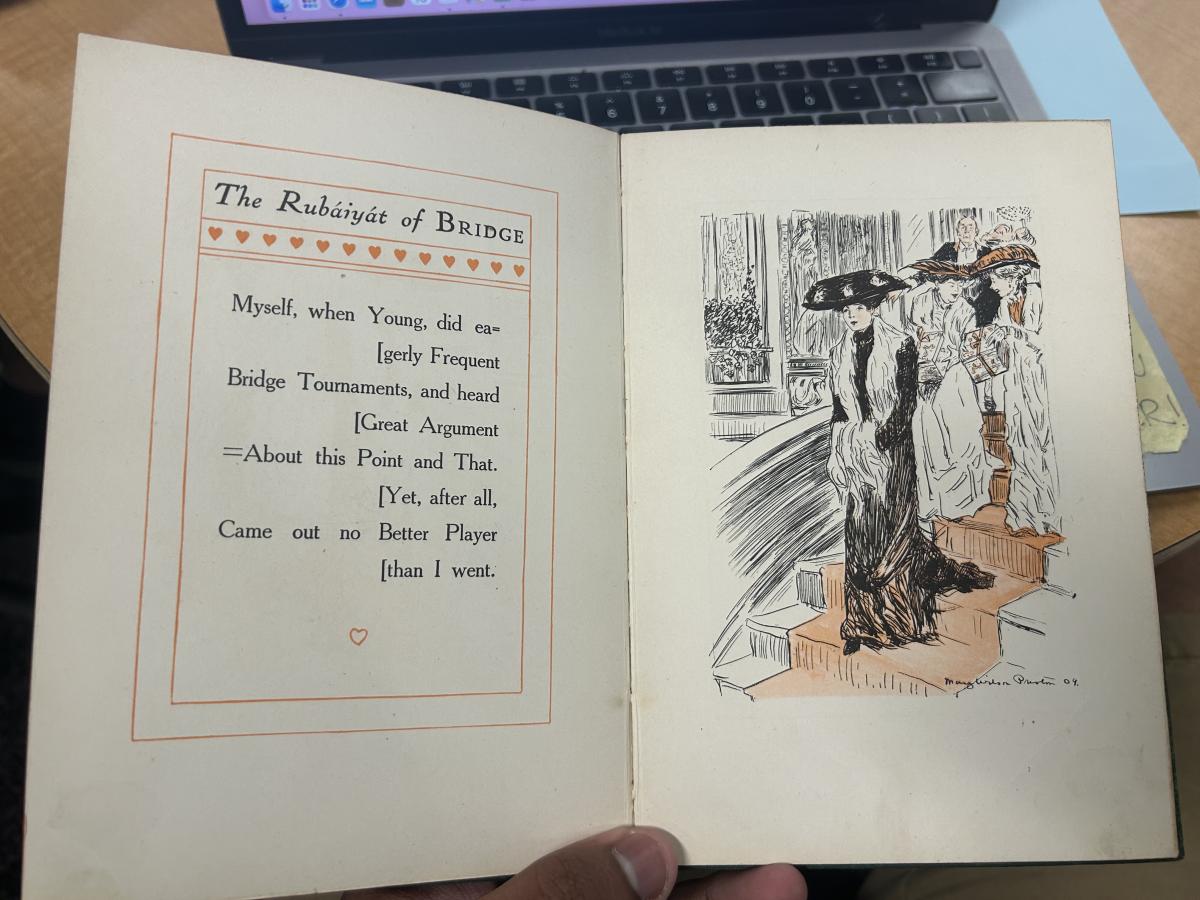The Rubáiyát of Bridge was originally published in 1909, and the game of bridge was something that everybody was familiar with. But what about those who didn’t want to learn about the game of bridge? While The Rubáiyát of Bridge is an entire collection of poetry based on the joys and fun of playing the card game of bridge, there is one particular stanza that explores the idea of people being forced to learn the game of bridge as a means to fit into society.
The stanza reads, “Myself, when Young, did eagerly Frequent / Bridge Tournaments, and heard Great Argument / About this Point and That. Yet, after all, Came out no Better Player than I went”. The illustration that accompanies this stanza is one of a woman, wearing all black, presumably leaving a bridge tournament. She has a frown on her face, and appears to have isolated herself from the rest of the people. There are other people in the illustration too, but they seem rather happy that they had a chance to play bridge. The line "came out no better player than I went" really stands out to me because for me, this gives a message the narrator wasting theit time at these bridge tournaments, and wasn't really paying attention when playing bridge. With this line, and pairing it with the illustration, I also get the impression that the narrator was only going to these tournaments to fit into the crowd and not feel left out.
The details in the illustration, such as the sad face on the woman and the separation from the rest of the crowd, leads me to believe that this woman didn’t want to be at this bridge tournament to begin with, but was either told to go, or decided to go anyways to make sure she wasn’t left out. Also, the words in the stanza, “Yet, after all, Came out no Better Player than I went”, also makes me think that she just went to the tournament with no real intention of getting better at the game of bridge, but rather, to make an appearance.
Another interesting note about the illustration that is attached to this stanza is that the lady in the illustration is wearing all black. This illustration is a far cry from the other illustrations in the Rubáiyát, particularly with the other illustrations of women. The other illustrations that involve women in this Rubáiyát are full of bright and vibrant colors that stand out, and the women look happy and look like they enjoy playing the game of bridge, especially in a group setting. I can’t help but wonder if the illustrator decided to make the woman wear black on purpose, perhaps to signify the loss of something. Whether it be the loss of happiness, or the loss of identity, the stylistic choice of making the woman wear black was done on purpose.
Therefore, I think that this illustration has an underlying message of people only wanting to play the game of bridge to fit into society, and to not feel left out. The feeling of being left out from society has been one that has been around for a while now, and this is something that May Wilson Preston illustrated in her illustrations.
Of course, this is an outlier of an idea from the rest of the Rubáiyát. The Rubáiyát has different themes and mentions of playing the game of bridge in a group setting for fun, and to enjoy the game with other people. But this one illustration shows that some people only played bridge because they didn’t want to be an outcast from the rest of the crowd.




